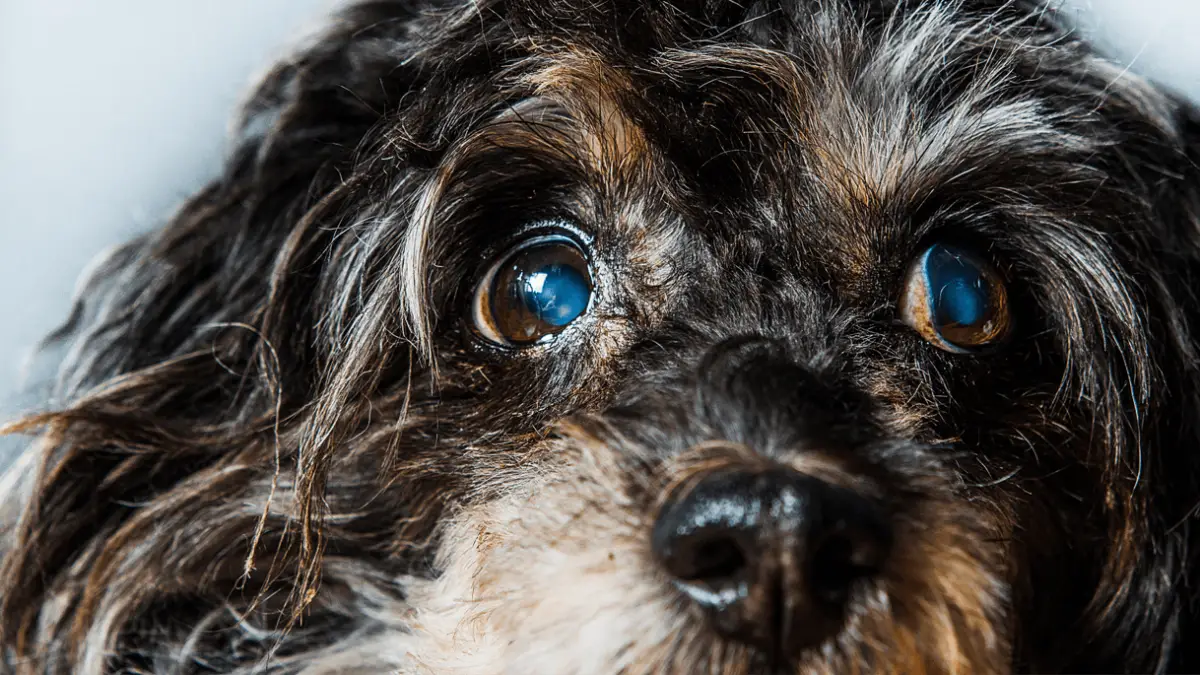Cataracts In Dogs - Causes, Symptoms & Prevention
20.11.2020.
Cataracts are a typical dog eye problem that can cause our beloved dogs a lot of problems. They are one of the leading causes of canine blindness, and as dog owners, we should all be familiar with that potential health issue. Let’s find out the symptoms of cataracts, how serious this problem is, and whether it is treatable or preventable.
What are cataracts in dogs?
Cataracts are blurring a dog’s vision, and they are an opacity in the dog’s lens. Depending on the size of cataracts, your dog might experience slightly blurry vision or complete blindness. You should regularly check your dog for signs of cataracts because the thicker they become, the more their vision will become impaired.
What are the symptoms of cataracts?
The easiest way to spot cataracts is if your dog’s eyes become blurry, cloudy, or have a bluish-grey appearance. That should be a clear sign that it is time to visit the vet. It is important to understand the difference between the cloudiness or graying of the eye because of old age and cataracts. Clouding, because of old age, is called nuclear sclerosis, and it is natural and normal. It is not as dangerous as cataracts, but you should still visit the vet as soon as you can.
What causes them?
There are many reasons a dog can develop cataracts, and the most common reasons are disease, trauma, inherited conditions, and old age. Cataracts in dogs can be present from birth or form when they are relatively young (1-3 years old). A large percentage of cataracts are connected to dog diabetes.
Breeds prone to cataracts
Unfortunately, all dog breeds are prone to eye problems and cataracts. They can be induced by old age or trauma to the eye, so no matter what breed your dog is, it can potentially be affected by this eye problem. Like with other health problems, some breeds seem to attract cataracts more often, and those breeds are;
- Cocker Spaniels
- Havanese
- Standard and Mini Poodles
- Boston Terriers
- Fox Terriers
- Silky Terrier
- Scottish Terrier
- Bichon Frise
How can a vet diagnose cataracts?
Apart from examining all signs of cataracts we mentioned, there are ways vets check dogs for cataracts. Usually, a dog ophthalmologist’s preliminary exam is enough to determine whether your dog has cataracts or some sort of different eye problem. After that, you should have a consultation regarding the next step and your dog’s treatment options.
What happens if you haven’t noticed cataracts in time?
Generally, health problems should never be left untreated, and they usually end up doing more harm. When it comes to untreated cataracts, they can slip from the tissue holding them in place and float freely within the eye. A free-floating cataract can block natural fluid drainage and lead to glaucoma. Glaucoma leads to permanent eye damage and permanent blindness. They can also start dissolving in the eye and cause a painful infection that can lead to blindness or even amputation.
How can I treat my dog if they develop cataracts?
If your dog already developed cataracts, there is, unfortunately, nothing you can do but to start treatment. Veterinarians and dog ophthalmologists will determine the best steps to take, and in most cases, that would be surgery. Cataract surgery for dogs has a high success rate and can completely restore your dog’s vision. Your dog will need delicate post-operative care.
Eye drops for cataracts
Unfortunately, eye drops are not an effective way to treat cataracts. A vet will prescribe eye drops for dogs with cataracts if there is an underlying condition that needs to be taken care of first. If your dog has cataracts and eye inflammation, the inflammation should be taken care of first, and that can usually be done with eye drops. If there are other conditions present, it is unlikely that cataract surgery will be successful or even allowed. Eye drops are also prescribed after the dog cataract surgery as prevention for the development of inflammation.
Cataract prevention
Prevention is better than a cure in this situation, and prevention should include;
- Regular vet check-ups.
- Taking the dog to the vet if their eyes are getting cloudy or gray-bluish.
- Take your dog to the vet if they seem disoriented.
- Make sure your dog is on a healthy diet, so they don’t develop diabetes.
- Check the health of your puppy’s parents because cataracts can be inherited.
- Limit your dog’s sun exposure and make sure they have enough shade when outside.
- Include antioxidants in their diet (such as omega acids found in fish oil).
World Dog Finder team







Share